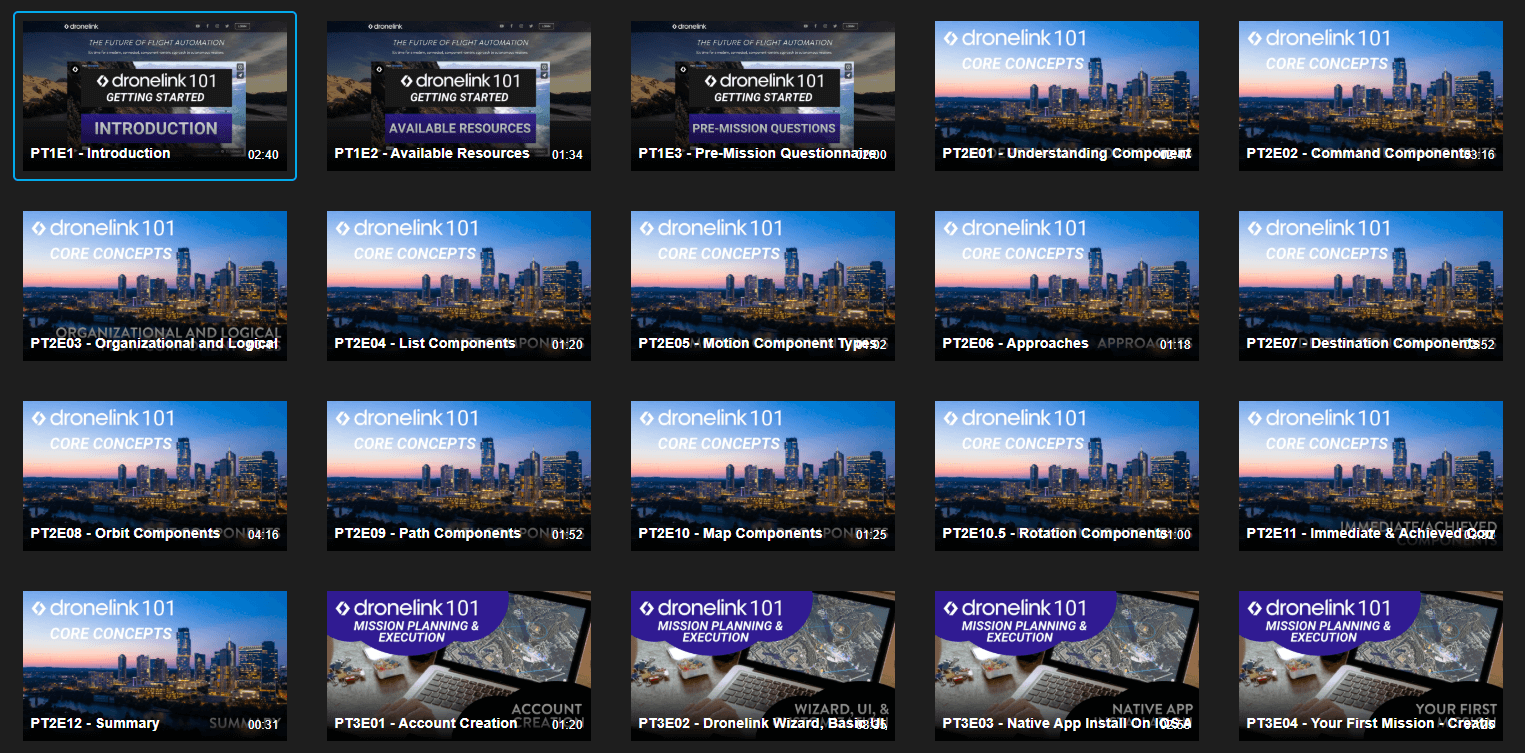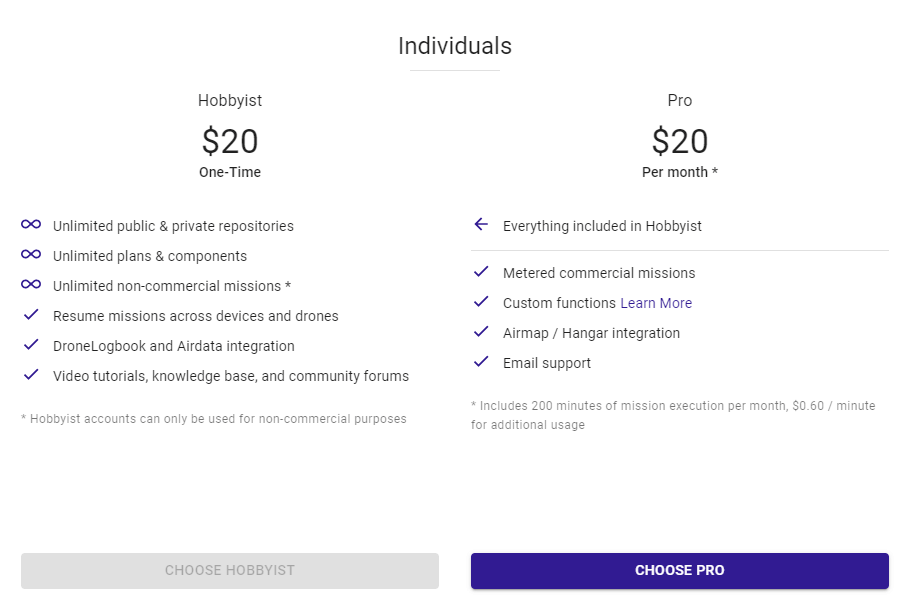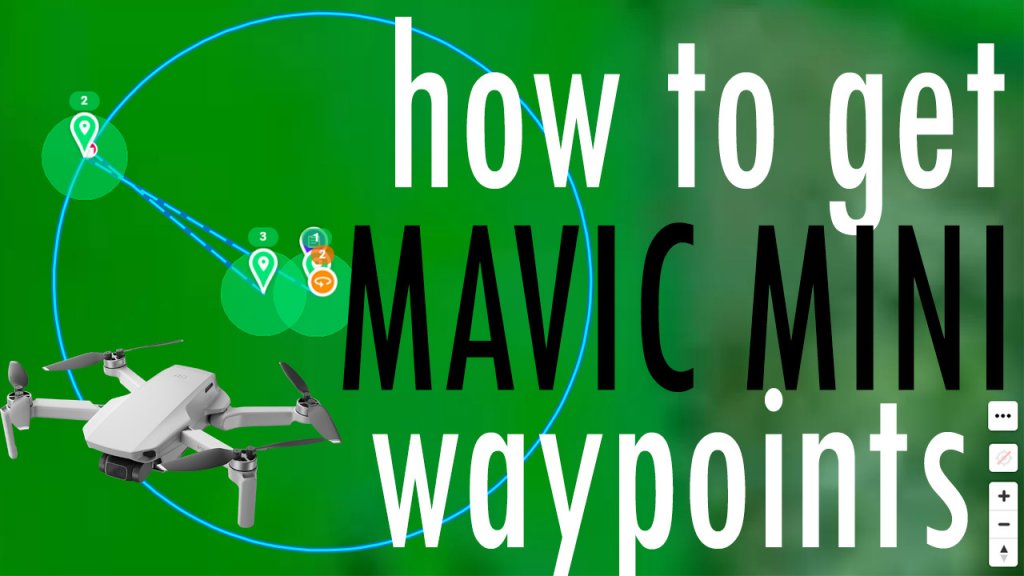The DJI Mavic Mini is a surprisingly good drone, even with it’s tiny size and tiny price. In order to keep the drone under 250 grams, many of us believed that DJI gave it a smaller brain, which explained why it didn’t have advanced features like object tracking, quickshots and waypoints.
Thanks to a company called Dronelink, we are happy to report that you can now program waypoints in the Mavic Mini and take advantage of autonomous flight modes similar to DJI’s QuickShots.
Dronelink
In simplest terms, Dronelink is software for drones that allows you to plan, test and fly missions. It works with iOS, Android or on the web and acts as a ‘virtual pilot’ sending stick commands in real-time using the DJI remote controller. You can set up missions in advance that are automatically linked to the app in your smartphone or tablet, or you can create them ‘on the fly’ in the field.
Because Dronelink uses a custom flight controller that performs all of the calculations in real-time on your mobile device, older smartphones may not be able to handle the operation. We received an ‘older device’ warning at startup using both an iPhone 6 and an iPad Air 2. If your mobile device encounters problems running Dronelink a warning on the screen will appear that says “Device Running Too Slow”. If this happens to you, allow the device to catch up and consider breaking the mission into smaller chunks. Some devices may not be up to the task of running Dronelink, so consider it as an excuse to upgrade.
Learning Curve
I’ll be completely honest when I say that Dronelink is not an app you can just open and start using right away, even if you’re already familiar with DJI’s waypoints setup.
The learning curve for Dronelink appears steep, but the developers have put together an extensive library of video tutorials that guide you through the process of mastering Dronelink’s autonomous flight planning. Taking the time to go through the tutorials will help you understand the components and logic behind Dronelink’s mission planning and will save you from serious aggravation.

The video tutorials range in length, but most are bite-sized chunks that help you grasp a concept so you understand the logic and flow of creating a mission.
We’ll emphasize this point one more time: programming a Dronelink mission is a complex task. The more you understand before attempting, the more likely you are to enjoy using it. Skip the learning curve and you’ll either crash your drone or abandone the app altogether.
But it’s because of the detailed programming and components built into Dronelink that makes it so powerful. DJI’s programmable waypoints could be considered a ‘dumbed down’ cousin of what Dronelink is capable of.
The irony of having an app as powerful as Dronelink running missions for a ‘simple’ drone like the Mavic Mini is not lost on us. The majority of Mini owners chose it because they wanted an easy to fly drone without all of the red tape. So for most of those users, Dronelink won’t be something they’ll likely embrace.
But for more serious drone pilots, many of whom keep a Mavic Mini as a companion to their more advanced drones, Dronelink adoption via the Mini will likely be a gateway drug to incorporating it across their fleet.

Dronelink is subscription based with different tiers of pricing. We purchased the one-time $20 ‘Hobbyist’ plan just to give it a test-drive, which allows unlimited non-commerical missions. For $20 per month individuals can purchase a Pro plan that allows 200 minutes of mission execution per month, and metered charges of $0.60 per minute after that.
Team plans are also available allowing additional users, more minutes etc. Full details on the Dronelink plans are available here.

After watching a number of the tutorial videos, I set up a basic 5 component mission to take off, fly to a location and complete an orbit. I started by logging in to Dronelink on the web in a Chrome browser and assembled the components needed to execute my mission.
After the mission saves on the web it’s immediately available for you in the Dronelink app when you’re signed in.
I took the Mavic Mini outside and set it up for flight as normal, except instead of opening the DJI Fly app I opened the Dronelink app.
Once open I waited for it to grab enough satellites for takeoff and hit the mission play button.
I was a little surprised to see my old iPhone 6 run the mission without lag or warning messages, but I will admit to a having some ‘nerves’ about whether the Mini would be safely in my hand in a few minutes or flying away to parts unknown.

The mission was short, just around a minute, and when it executed the final command to fly to the starting point I manually exited the mission and manually landed the Mini on my palm.
Creating and successfully flying even a basic mission like this using a new app is pretty cool. If the nerd is strong in you, I think you’re going to really enjoy both using the Dronelink app as well as the well organized learning curve.
When I clicked ‘subscribe’ on the Dronelink website last night I didn’t expect to be executing my first mission before lunch the next day…but I did.
Dronelink’s website has an excellent support forum community that will help you with specific questions and overcome challenges you may be having with the software.
Dronelink is an incredibly powerful app. Once you start watching the tutorials you’ll have a real appreciation for how much work it was behind the scenes for it to be programmed.
The list of Dronelink supported drones is substantial, covering almost all DJI drones including all Phantom 3 & Phantom 4 Series of drones, all of the Mavic Series (except Mavic Air 2), the Inspire and Matrice Series and even the Spark. I don’t think the SDK for the Mavic Air 2 has been released yet, so that explains why it’s not supported yet. Dronelink also supports the Parrot Anafi.
So the mission we set up and tested today was just a simple, random flight test.
If you go to the Dronelink website you can see how the app is being used by more experienced users for building inspections, towers, ground surveys of aircraft, cinematography, 360 photos, as well as hyperlapses, mapping and 3D construction models.

Once you get started with Dronelink, there really aren’t any limits.
One important caveat to be aware of is that using third party software is excluded from coverage if you have DJI Care Refresh on your drone unless it is an approved product. At time of writing, had not confirmed whether Dronelink is an approved 3rd party app so check that out if you feel the need.
And don’t forget that the Mavic Mini doesn’t have any obstacle avoiding sensors. You’ll need to plan your flights carefully.
I think we’re definitely going to have some fun with Dronelink.
Are you going to give Dronelink a try? Let us know in the comments below.





Does this mean I do not have to have the controller to operate the mini….or is there an app that you know of that will do that….I burnt my controller up I think…if there isntcanyou tele where to get a reasonable priced controller or even if they have a aftermarket controller that will work. Thanks